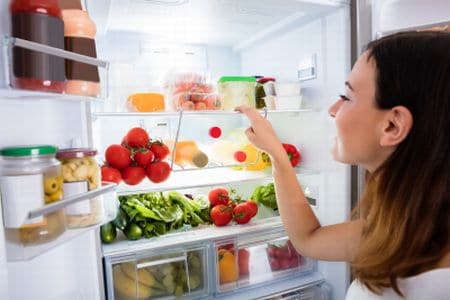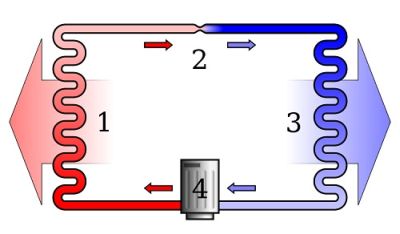How Does a Refrigerator Work?
Posted on July 11, 2018 By Alison P
You've used this kitchen appliance every day for virtually your entire life. You rely on it to keep your food edible. You may grumble when it's time to clean it, but deep down you know it's a small price to pay to keep this cornerstone of culinary convenience in proper working order. The refrigerator is truly a fixture in modern life, but have you ever stopped to wonder how exactly it all works? We're here to indulge your curiosity with the cold hard facts about your kitchen's pillar of coolness!
How Did Refrigeration Work in the Olden Days?
Refrigerators of yore were essentially large, stationary coolers - they were built with a compartment to hold large blocks of ice, which were usually distributed by a local delivery service. You simply added the ice and closed the door, and any food stored inside would stay cold for as long as the ice remained solid. Once electric refrigerators became readily available in the 1930's, these old models were referred to as "iceboxes" in order to differentiate them from the more modern option.
 What Makes a Fridge Cold?
What Makes a Fridge Cold?
Today's refrigerators use a process called evaporation cooling, which isn't so much about blowing in cold air as it is about pulling out heat. The epicenter of the process is a refrigerant that fluctuates between hot and cold as a means to remove warmth from the refrigerator's interior. Have you ever sprayed an aerosol can and felt it become colder in your hand? That's an example of the physics behind evaporation cooling; compressed gas is warm, but it cools quickly when it decompresses. The refrigerator's gaseous coolant starts out hot when it comes out of the refrigerator's compressor, and then flows through the exterior tubing on the back and passes through an expansion valve. This valve causes its pressure to drop instantly, and the coolant becomes extremely cold as it starts flowing through the back wall of the refrigerator's interior. Since heat is drawn toward cold air, the chilled coolant acts as a magnet for any warmth inside the airtight refrigerator, and the magic of thermodynamics creates a "pied piper" effect that draws heat from the interior and pulls it outside. The coolant then flows into the compressor and the cycle starts again. Any time you hear that familiar refrigerator hum, you're hearing the compressor switch on to start the flow of refrigerant!
What About the Freezer?
What makes a freezer cold is its close proximity to the refrigerator's expansion valve. The coolant is at its coldest when freshly decompressed, and that supreme heat-sucking power goes right to work on the freezer compartment. The refrigerant travels faster through the freezer compartment than it does through the refrigerator, and with it quickly sweeps out any warmer air.
How Does a Refrigerator Door Work?
The refrigerator's airtight door utilizes a magnetic gasket, providing an even seal all around the door. It not only keeps cold air in and makes the refrigerator easy to open and close - the magnetic attraction between the refrigerator's body and the door seal allows it to close on its own if it's left ajar.
The Fridge Light Definitely Shuts Off When I Close the Door, Right?
Turn on your phone's video recorder, put it in the fridge, then close the door and open it. Reviewing your own footage is the best way to know for sure!
Shop out selection of refrigerators on sale today